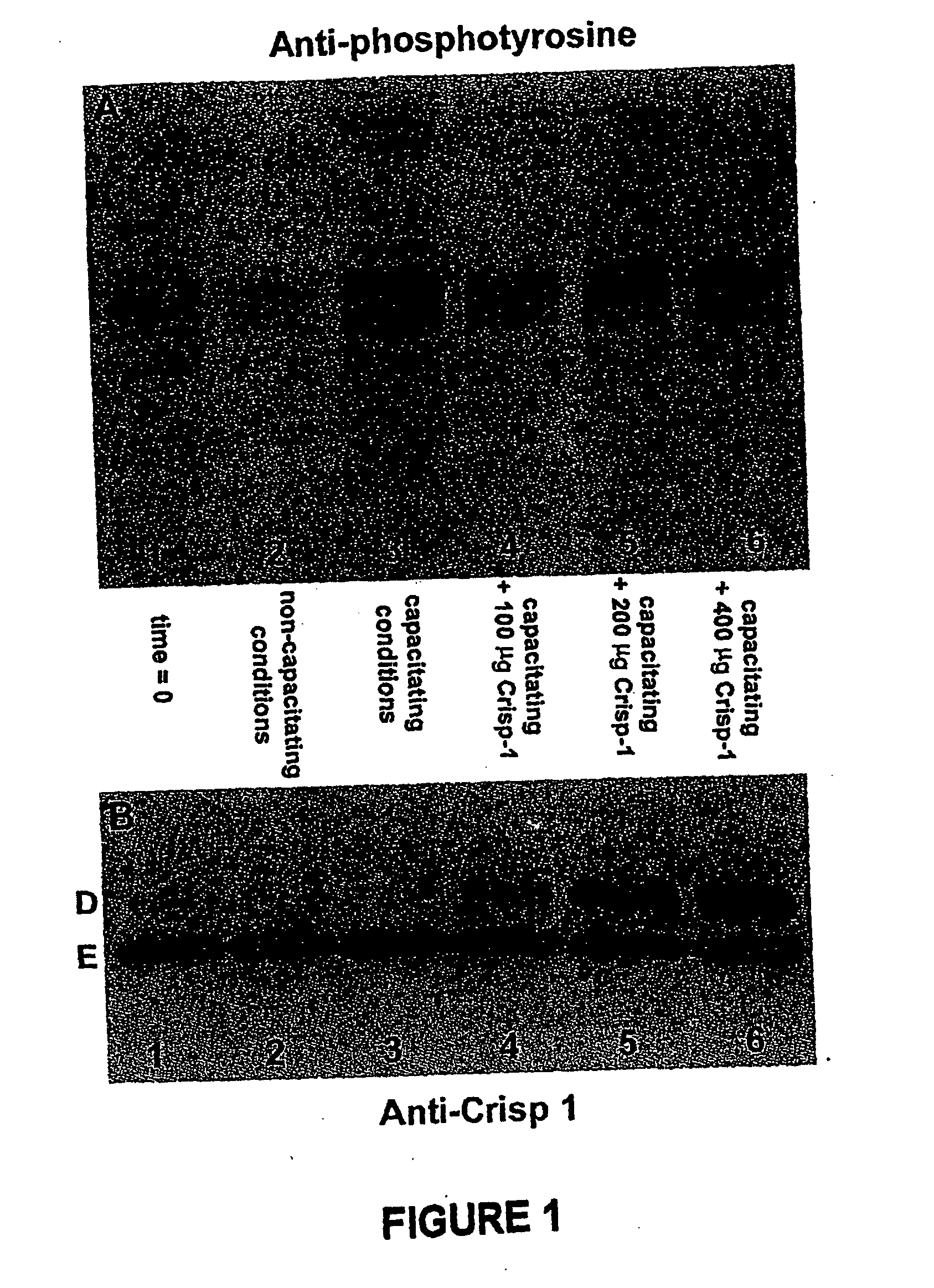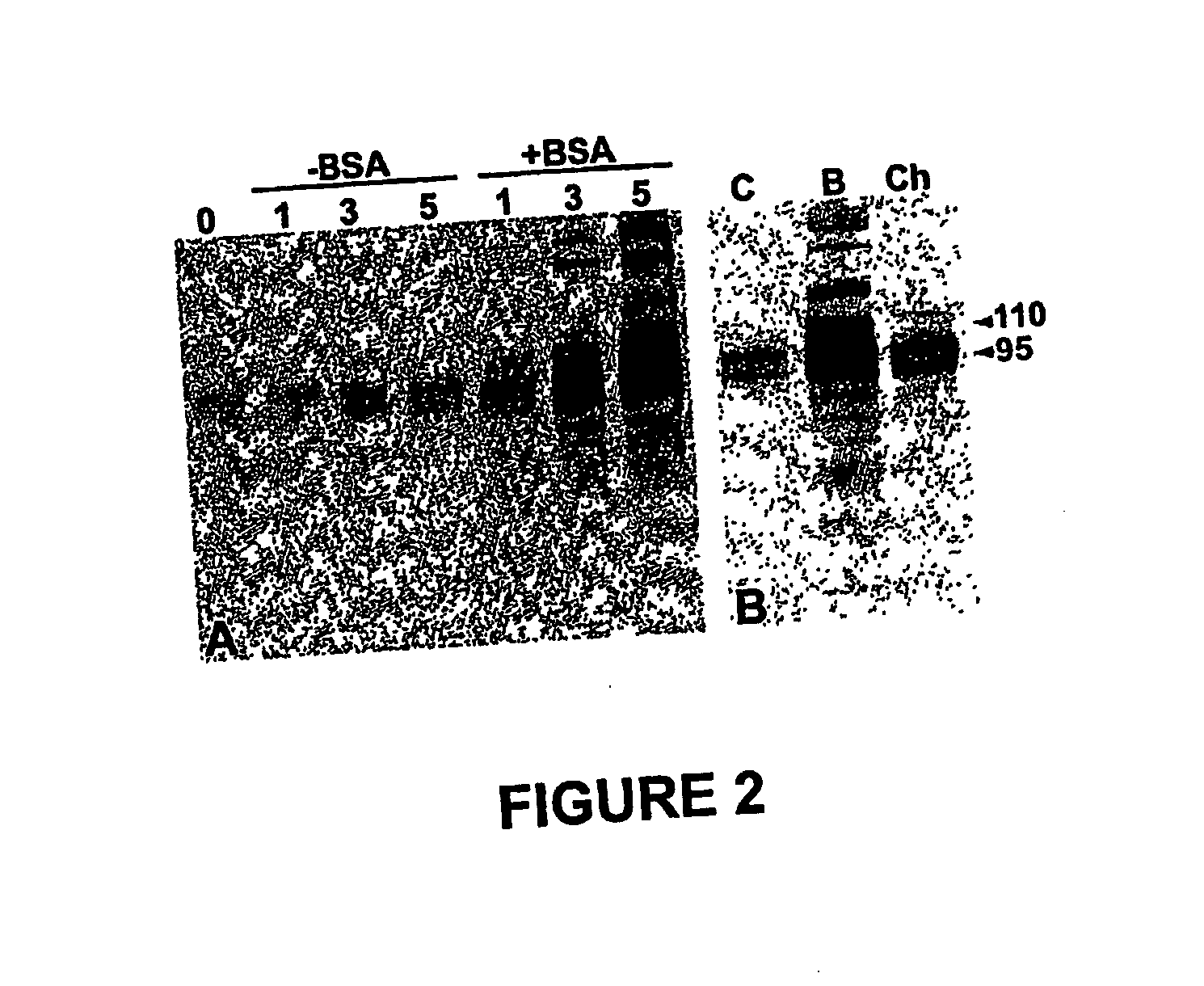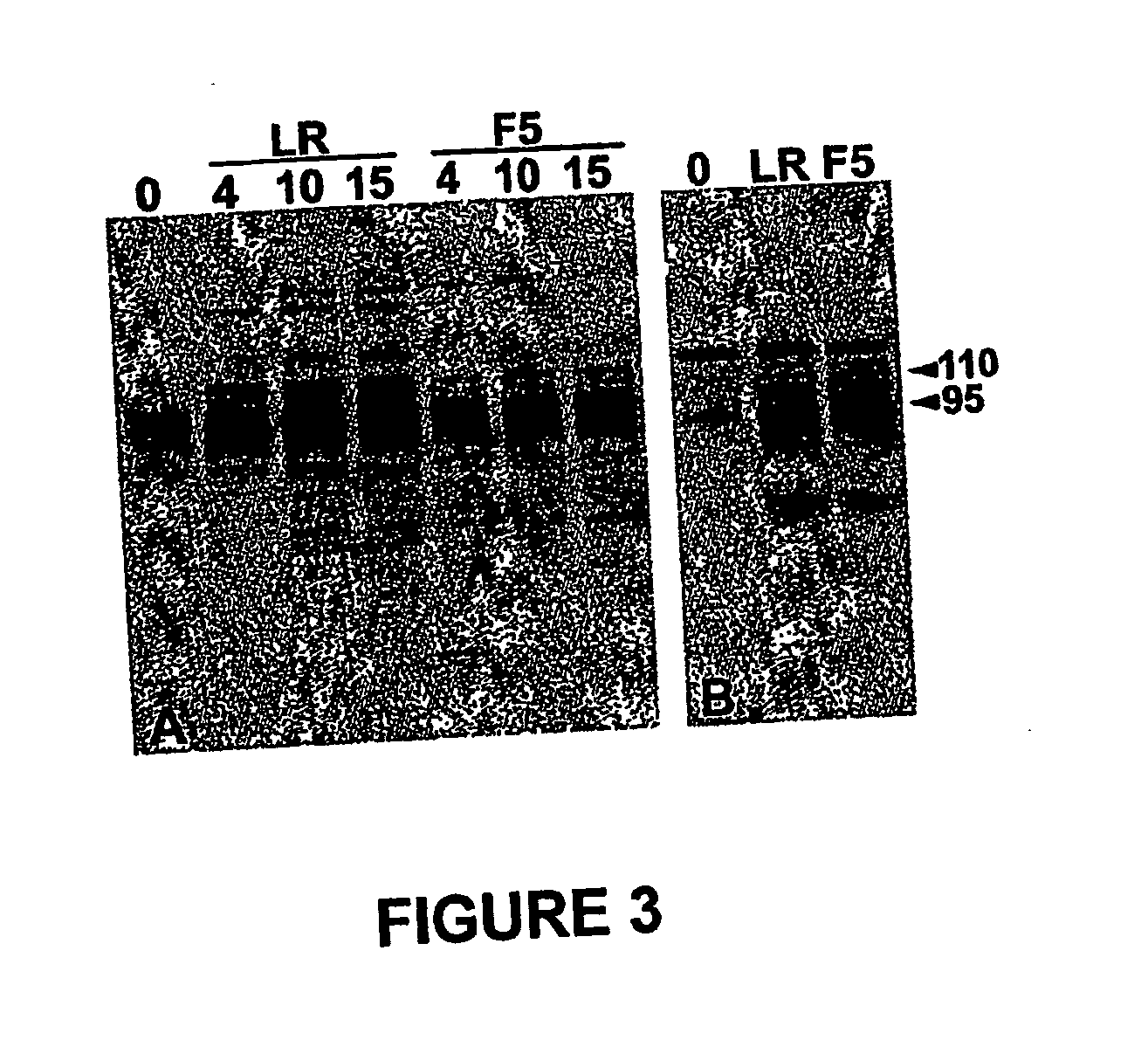Crisp polypeptides as contraceptives and inhibitors of sperm capacitation
a technology of sperm capacitation and polypeptides, which is applied in the direction of peptide sources, peptide/protein ingredients, drug compositions, etc., can solve the problems of inability to achieve non-surgical vasectomy, methods that interrupt, and no single mode of male contraception is without immediate drawbacks in efficacy or compliance, etc., to inhibit sperm capacitation, inhibit phosphorylation of proteins, and inhibit acrosome reaction
- Summary
- Abstract
- Description
- Claims
- Application Information
AI Technical Summary
Benefits of technology
Problems solved by technology
Method used
Image
Examples
example 1
Role of CRISP Proteins in the Regulation of Sperm Capacitation and Use in Contraception
[0069] The results of Example 1 are shown in FIG. 1. Rat sperm were collected from the end of the epididymis and incubated in a defined capacitation medium in vitro for 5 hours under controlled conditions. A sample of sperm was taken at the beginning of incubation to provide the time zero conditions (lane 1 of FIG. 1). Aliquots of collected sperm were incubated under the following various conditions: [0070] For 5 hours under non-capacitation conditions (lane 2 of FIG. 1) [0071] For 5 hours under capacitating conditions (lane 3 of FIG. 1) [0072] For 5 hours under capacitating conditions with increasing concentrations of CRISP-1 (lanes 4, 5 and 6 of FIG. 1).
At the end of incubation, sperm were solubilized and solubilized sperm proteins were separated by SDS gel electrophoresis. Proteins were then transblotted onto a membrane and treated with a primary anti-phosphotyrosine antibody. The results of...
example 2
Inhibition of Capacitation-Associated Tyrosine Phophorylation Signaling in Rat Sperm by Epididymal Protein Crisp-1
[0075] In mammals, development of fertilizing ability and progressive motility by sperm, the process of post-testicular maturation, begin as sperm are moved through the male reproductive tract and are completed when sperm are deposited in the female reproductive tract and undergo capacitation.
[0076] In the male post-testicular duct system, sperm acquire new proteins and glycoproteins on their surfaces and undergo numerous biochemical changes during their passage through the ducts that make them capable of vigorous, directed movement and able to fertilize an egg (Yanagimachi R. Mammalian Fertilization. The Physiology of Reproduction 1994: 186-317). Crisp-1 (DE, AEG) is a glycoprotein couplet (comprised of protein D and protein E, hereinafter referred to collectively as Crisp-1) that is secreted by the epididymal epithelium (Brooks and Higgins, Journal of Reproduction &F...
PUM
| Property | Measurement | Unit |
|---|---|---|
| time | aaaaa | aaaaa |
| time | aaaaa | aaaaa |
| time | aaaaa | aaaaa |
Abstract
Description
Claims
Application Information
 Login to View More
Login to View More - R&D
- Intellectual Property
- Life Sciences
- Materials
- Tech Scout
- Unparalleled Data Quality
- Higher Quality Content
- 60% Fewer Hallucinations
Browse by: Latest US Patents, China's latest patents, Technical Efficacy Thesaurus, Application Domain, Technology Topic, Popular Technical Reports.
© 2025 PatSnap. All rights reserved.Legal|Privacy policy|Modern Slavery Act Transparency Statement|Sitemap|About US| Contact US: help@patsnap.com



